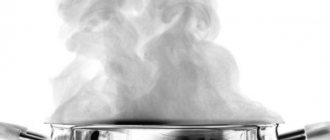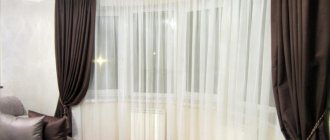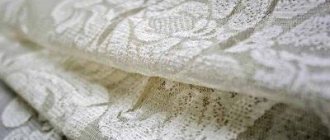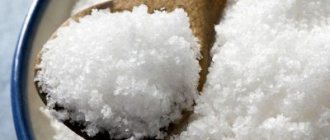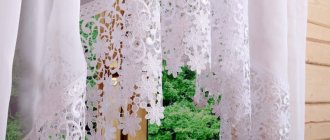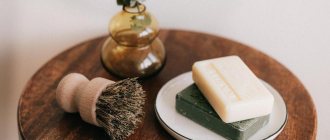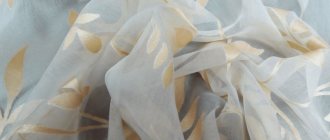What is this text about? In this text we will answer the following questions: how to iron organza tulle with an iron how to iron curtains with an iron How to iron curtains
Caring for curtains does not require any complex manipulations or special skills. However, if washing window decor is a familiar task for many housewives and anyone can cope with it, then ironing sometimes raises a lot of doubts.
How to iron? What mode should I set? Can I use steam? And do they even need to be ironed? All these questions often arise in the minds of curtain owners. Moreover, proper ironing does not only consist of turning on the iron and walking the heated sole over the material. The rules for competent, and most importantly, high-quality ironing depend primarily on what fabric your curtains are made of. Only by deciding on the material can you not only preserve the integrity of the fabric, but also extend the service life of the product as a whole.
Is it possible to iron wet tulle?
It is better to start ironing tulle while it is damp, since using a spray bottle on dry fabric can lead to the formation of streaks during the ironing process.
Interesting materials:
How to obtain a residence permit in Russia for citizens of Moldova? How can a citizen of Tajikistan obtain a residence permit in Russia? How to get a residence permit in the USA 2022? How to obtain visible residence in Russia? How to get a virtual Qiwi card for free? How to get a visa to travel to Germany? How to obtain a visa to enter Ukraine? How to get a visa if you do not work officially? How to get a visa if you don't work? How to get a visa to Bali?
Ironing instructions after washing
To ensure that there are fewer creases on clean tulle, you need to wash the product correctly :
If the fabric is not too dirty, then choose the delicate mode.- The water temperature should not exceed 40 degrees.
- The spin mode is set to minimum speed.
- It is advisable not to use the drying mode.
- To make the material look smoother, it is recommended to add fabric softener to the machine.
If the tulle is cleaned manually, then add fabric softener during the last rinse.
Afterwards, the fabric is hung on a rope and excess water is allowed to drain. There is no need to unscrew it so that additional creases do not form. When the water has drained, hang the damp cloth and smooth it with your hands.
How to properly wash tulle by hand so that you don’t have to iron it later - in the video:
To tidy up large tulle items (curtains, tablecloths) that are difficult to iron on an ironing board, use the following ironing methods:
- In the fresh air . The material is dried outside, thrown in half over a rope. In this case, it is advisable to straighten all the folds and secure the position with clothespins. After a few hours, the product will level out, all that remains is to remove the creases where the clothespins were.
- Using a steamer .
A clothing steamer can iron straight and complex-cut garments with many layers within half an hour. A clean, slightly damp item is hung and steamed in a vertical position. It is recommended to direct steaming using downward movements (exclusively from top to bottom). You should not linger in one area for a long time, as this can damage the material.
Using steam in the bathroom .
Washed and dried items can be ironed over the bathtub. To do this, pour hot water into the container (at least 80 degrees). Tulle is pre-hung over the bathtub. The room is closed for half an hour, after which the wet product is hung up and allowed to dry naturally.- Cold water . Dry, clean tulle is laid out on a flat surface (sofa or bed). Fill the spray bottle with tap water. The material is sprayed over the entire area and rubbed over it with palms from the center to the edges. Allow to dry.
- Ladle or other vessel . In order to iron the tulle, it is laid out on an ironing board. Boiling water is poured into the ladle. Half the capacity is enough. With smooth movements, the hot metal utensil is moved over the fabric, smoothing out wrinkles.
The methods recommended on the Internet using a wet towel placed on crumpled tulle, as well as leveling the material under the mattress, are quite controversial. Many users rate them as ineffective.
Types of tulle that do not require ironing
There are several types of tulle that do not require ironing at all, or require very rarely. Tulle that does not need to be ironed after washing consists of:
- synthetic fabric;
- cotton fabric;
- linen fabric.
- Synthetic fabric. Due to its composition, this material rarely wrinkles, so it can be hung up immediately after washing. But how to iron a synthetic tulle veil, if you still need to? The material is folded several times and ironed with an iron heated to 120 °C.
If the synthetic curtain is not wrinkled during washing or wrung out, it dries perfectly on the curtain rod without visible wrinkles
Cotton tulle straightens well under its own weight
It is better not to wring out linen fabric. After rinsing, such curtains should be shaken vigorously and hung carefully so that there are no wrinkles.
How to wash curtains
Each type of fabric has its own washing characteristics. For example, polyester “feels great” in an automatic machine in normal mode at a temperature of 40 to 60 degrees. The same applies to nylon fabric, however, in its case the use of chemical bleaches is not recommended. But with organza and veil you should be more careful so as not to damage the product. The temperature should not exceed 30 degrees, and the mode should be set to delicate washing, or it should be done manually.
Tip : To add shine to curtains, add a tablespoon of vinegar to the drum of the washing machine.
However, there are a number of general rules for washing tulle curtains that will allow you to cope with the most difficult stains using the means at hand.
- Before washing, first simply shake off any dust from the curtains.
- The product should be pre-soaked for several hours in warm water with the addition of powder or salt (a tablespoon per 10-liter basin).
- When washing tulle by hand, do not rub it too hard; just slightly squeeze the material. But careful rinsing is required until the water becomes clear.
- When washing in a machine, place the product in a special bag or pillowcase. Set the temperature to 40 degrees.
- Do not pour a lot of washing powder so that the product is rinsed well and there are no streaks left on it. When hand washing, rinse first in warm water and finally in cool water.
White curtains are especially susceptible to contamination - dust or greasy stains are more visible on them if the curtains are hanging in the kitchen. Since digestion (boiling) is contraindicated for these fabrics, we suggest you consider several “folk” methods by which you can restore tulle to its former whiteness at home.
Method No. 1
To remove yellow plaque, you will need ammonia and hydrogen peroxide in a ratio of 1:3 (the amount is indicated in the size of a tablespoon). Pour the components into hot water (approximate temperature 60 degrees), into which the tulle is placed for 30 minutes. Afterwards, the product is thoroughly rinsed, carefully wrung out of excess moisture and hung on a stretched rope.
Method No. 2
Moisten the fabric and gently soap it with a bar of laundry soap (can be replaced with gel detergent). Pour 250 grams of baking soda (about half a standard pack) into a bowl of water - this will prevent the formation of “flakes” from the drug, soak the tulle in it for about 3 hours. After time has passed, place it in the washing machine compartment and set the “hand wash” or “silk” / “wool” mode.
Method No. 3
A rather extraordinary method of returning curtains to their original whiteness, but the result exceeds all expectations.
- The first stage involves soaking the fabric for a long time in a strong saline solution, which actively absorbs dust particles and gives a slight shine. Afterwards, you need to thoroughly rinse and wash the tulle with laundry soap. To secure the result, put the product in the washing machine.
- The second stage is bleaching using brilliant green. To do this, dilute a couple of drops of brilliant green and three tablespoons of table salt in five liters of warm water. It is very important here not to disturb the proportions - the solution should be only slightly turquoise in color. Leave the curtains in the basin for a couple of minutes. Afterwards, rinse thoroughly and hang to dry.
Tip : when bleaching, instead of green, you can use blue - 0.5 teaspoon per 10 liters of water or 1 cap in the washing machine.
Method No. 4
Whitening will take at least a day, but the result will please you - even an old yellowed curtain will sparkle white again. So, soak the curtain for 24 hours in water to which a packet of boric acid (available at the pharmacy) and a few tablespoons of baking soda have been added. Periodically rinse the fabric in this mixture. After the time has passed, wash the product on a delicate cycle.
Important : it is better not to use purchased modern bleaches, even with an “innovative formula.” These products give excellent results the first time they are used, but later the fabric will either collapse or turn yellow.
Tips and prohibitions
In order not to injure yourself and not to spoil the light fabric during the ironing process, housewives offer several useful tips:
when working with a heated kettle or steamer, you must follow basic safety rules, do not be distracted, do not allow children into the process or closely monitor their activities;- when steaming and working with a hot hair iron, it is advisable not to stop in one place to straighten a complex fold, otherwise the fabric may melt;
- when working with steam, it may be necessary to re-treat especially wrinkled areas (in order to re-treat them, you need to let them dry first);
- You should not start the ironing process from the center of the product; if something goes wrong, the defect will be less noticeable from the edge.
How to iron tulle: useful tips
Ironing cannot be done quickly, as delicate fabrics require careful handling. In order not to spoil the tulle, experienced housewives recommend using gauze. It adjusts to the fabric and prevents it from being damaged by the iron. The quality of ironing largely depends on the iron; if there are black burnt spots on its surface, they can leave marks on the tulle. Therefore, it is better to clean the device before the procedure. It is very good to use a special attachment; they come complete with modern iron models.
General recommendations
Tulle and curtains always have dents after washing, so it is necessary to carry out a number of procedures to straighten them out. Most fabrics require ironing. The temperature depends on the material, but it should not fall below 80 and rise above 150 degrees. Synthetic fabrics require the most delicate treatment and the use of a protective layer is mandatory. Plain paper or cotton cloth will suffice.
How to iron organza?
A very capricious, but beautiful material that looks perfect on the window. This is a very elastic fabric, so organza can be washed in a machine using the delicate cycle. Automatic drying is not recommended. After washing, the curtain should dry, but do not allow the material to dry out. It is better for it to sway in the wind, but without exposure to direct rays of the sun. Ironing organza tulle is difficult, so as not to spoil the fabric, you should follow the following rules:
- Use the “nylon” mode or a minimum temperature of 80 degrees.
- Iron inside out only, carefully placing on the ironing board.
- Use gauze or paper as a protective layer. Without protection there is a high risk of burning.
- Move the iron from top to bottom.
It is forbidden to use steam mode for organza, this will lead to loss of shine.
Synthetics
Washing and ironing synthetic materials and organza are very similar; these two types require delicate handling and can easily become damaged. You should also not use steam; you should choose the minimum temperature. It is not recommended to dry tulle after washing; it is better to iron it immediately. Dry fabric is very difficult to straighten out; wrinkles remain until the next wash. It is not recommended to moisten artificially using a spray bottle; water may leave marks.
For synthetics, the maximum temperature is 100-110 degrees. It is mandatory to use a protective layer in the form of a cotton cloth or paper towel. Otherwise, the tulle may burn and holes will remain. In addition, synthetic fabric can leave marks on the surface of the iron, thereby damaging the device. After ironing, the curtains should be hung immediately. If there is a special iron that allows you to iron curtains without removing them, it will be convenient after washing synthetic fabric.
Cotton tulle
Natural materials are easier to wash and iron. High temperature conditions are suitable for them, resulting in smoother and more beautiful clothes after washing. To make cotton curtains look beautiful, they need to be ironed damp. If you were unable to start the procedure immediately after washing, you can moisten it using a wet cloth or a spray bottle. Such tulle must be ironed at a temperature of 150 degrees.
Products made from natural materials may not be subject to thermal influences.
Natural cotton fabrics do not need to be ironed at all. Many housewives prefer to hang them on a cornice immediately after washing. After 2-3 hours they dry on their own and become smooth. To avoid ironing, it is very important to straighten the curtains immediately after the drum. Otherwise, after 10 minutes, folds will form that require heat treatment.
Nylon tulle
Curtains made from this fabric are rarely used; they look beautiful, but require careful care. For ironing, a mode of up to 110 degrees is used. Be sure to use a cotton protective layer; the procedure is carried out only on damp curtains. To even out all the folds, you need to make an effort; each place should be ironed 3-4 times. Steam use is not recommended. While still warm, it is better to hang such tulles on the curtain rods so as not to wrinkle them again.
Nylon curtains can straighten on their own if you hang them wet in the fresh air and wait until they dry completely.
General rules
Most curtains can be ironed, and even the thinnest or mesh items can be heat treated after washing. But in order not to spoil the products, you need to focus on the material. To properly iron tulle after washing, you must use a special board or flat surface. Experienced housewives give several useful recommendations:
- It is better to iron tulle a little damp; when dry, it quickly burns and is very difficult to straighten.
- The temperature is set individually depending on the material of the product.
- First, use an iron to straighten the seams with the nose on the front side, and then go over the entire product.
- Do not keep the device in one place for a long time. The result is a yellow spot or hole.
- Steam is used for ironing thick fabrics. Polyester curtains can get damaged.
Return to contents
Steamer as an alternative
How to iron curtains without removing them? A steamer will come to your aid. Many people purchased this wonderful thing a long time ago and forgot what it was like to use an iron. In the modern product market, steamers of different power and temperature are produced. In this case, manual or vertical devices will be more interesting.
Silk and wool
Silk curtains are a special type of window decoration that looks very elegant and noble in the interior. More suitable for interiors in the Roman style, Art Nouveau, classic, avant-garde, art deco, romanticism. But wool, on the contrary, gives the room softness, comfort and a feeling of happiness. Looks ideal in the following interior styles:
Ironing curtains made of silk or wool is not only an important task, but also a responsible one. The fact is that materials are quite difficult to smooth out, and it is not at all permissible to use steam or spraying on them.
- Ironing temperature is below average.
- A special mode is intended for materials. For silk - nylon or silk, for wool - wool.
- Using the steam function is prohibited. The “steam boost” function is even more impossible.
- Such products should be ironed only after complete drying.
Steam without appliances
To iron curtains by weight, you do not necessarily need to use special equipment. You can use some knowledge. For example, you can remove all folds and wrinkles from the material by hanging wet curtains on a line in the bathroom, filling the bathtub with hot water and closing the door to the room.
About 20 minutes after the steam has exposed the fabric, all you have to do is hang the curtains directly on the curtain rod - they will stretch out and be even.
Important! If creases still remain, you can use steam from the kettle. Just boil water in it, place the spout directly under the crumpled fabric, hold for a minute or two, and that’s it - the curtains will be completely straightened.
Photo curtains
Photocurtains are a new type of window decoration. Its essence is that any picture that you can choose yourself is applied to the material. As a rule, the image itself retains its appearance for quite a long time if you properly care for the product.
Usually, only polyester is used to create such curtains, therefore the ironing rules are similar to the previous point.
Using the steam function is not recommended as it may damage the photo print and cause the material to warp.
Linen, cotton and burlap
Such materials are very popular among eco-style lovers and everyone who prefers natural fabrics. They allow air to pass through perfectly, retain less dust, and they look very attractive.
Curtains made from such materials should be ironed at a temperature slightly above average. Typically, the acceptable mode is indicated on the iron with different markings:
- Roman numeral III;
- cotton and linen (cotton and linen);
- max.
Before starting the process, set the heating temperature a little lower than indicated on the label. It is better to gradually increase it later than to spoil the product with too much heat.
You can use the steaming function, but you need to control that the stream is weak. It is permissible to slightly moisten the material either from a spray bottle or using the spraying function.
Common mistakes when ironing
- Incorrectly set temperature on the device. If curtains are purchased in a store, they always have a label indicating the ironing mode for this fabric. If the products were sewn to order and there is no label, a test ironing is done on the wrong side from below.
- Do not steam delicate fabrics with an iron on an ironing board. Curtains made of polyester, organza, chiffon, silk, and velvet are easily deformed.
- Curtains with embroidery or rhinestones on the front side should not be ironed. Embroidery may lose its relief, and rhinestones may stick to the iron. You can ruin both jewelry and equipment.
To quickly and easily iron curtains using a steamer, iron, and without removing the product from the curtain rod, it is recommended to choose the most suitable method.
How to iron curtains
Today, manufacturers offer different materials for sewing window decor. As for curtains specifically, in most cases light, opaque fabrics are used, such as silk or polyester. But there are also products made from linen, burlap and even wool. Photo curtains and blackout are especially popular.
Ironing any product must strictly follow certain rules. And they depend only on what fabric your curtains are actually made from.
Types of materials and classic ironing modes
Some ironing characteristics differ for different types of fabric. For example, linen curtains should be ironed at maximum temperature. In this case, the canvas should be slightly damp.
For any other type of fabric, more careful processing is required:
- Polyester and viscose are ideal materials. They can amazingly decorate the interior of a room, and any dirt can be washed away from them without unnecessary difficulties.
Important! The ironing temperature for viscose and polyester should not exceed 140 degrees.
- Silk and taffeta do not tolerate steam. These materials are ironed only from the inside.
- In most cases, organza is not ironed. It is hung to dry in such a way that the material straightens during drying. Under the influence of its gravity, the material straightens. However, sometimes creases appear. To eliminate them, iron the curtain fragments at the lowest temperature, using a gauze lining.
- Velvet is one of the most difficult materials to care for. You need to iron it, barely pressing the iron, without resorting to steam.
- If you have embroidery on your curtains, you should wet it and iron it on the other side.
Polyester
Polyester is a synthetic material. Nevertheless, it is quite demanding on care, and even more so on ironing. Despite such “capriciousness”, curtains made from this fabric practically do not wrinkle. If the washing was carried out according to all the rules, then they can be hung on the curtain rod slightly damp, and they will straighten out under the influence of their own weight.
If it so happens that the product is heavily wrinkled and it is still necessary to iron it, then you need to use the following rules:
- minimum mode only;
- ironing should be done only on the wrong side;
- It is recommended to additionally cover the curtains with a damp gauze cloth.
How to straighten folds in fabric without removing it from the curtain rod?
If you hang wet tulle on a window, it self-levels under its own weight. This is what many housewives say. But it happens that folds still remain. In this case, the clean curtain is already hanging on carefully fastened hooks.
In order not to remove it from the cornice, use one of the proposed methods:
Spray with self-smoothing liquid .
It contains equal proportions of vinegar, water and fabric softener. The product is mixed in a spray bottle and sprayed along the entire length of the curtain at a distance of 30 cm from the surface. Once dry, the smell of vinegar becomes invisible.- Treat with a steamer or iron with a steam function. The equipment is kept at a distance of at least 10 cm so as not to deform the fabric;
- Use a hair straightener . To do this, warm it up well and process the edge with pressing movements. However, this method does not allow you to iron the middle.
This video will show you how to steam tulle while hanging:

